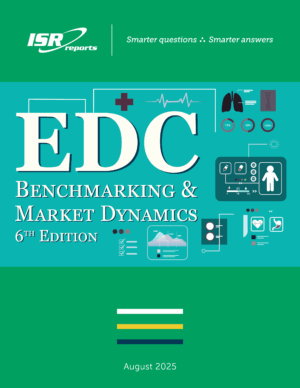Although patient reported outcomes (PROs) and clinical outcomes assessments (COAs) were originally collected and reviewed on paper, their electronic successors (eCOA/ePRO) have thoroughly eclipsed paper as the preferred data collection method. The whole clinical trial ecosystem–including regulators, sponsors, CROs, investigators, and patients–benefit from the use of these electronic tools for less error-prone data collection. eCOA/ePRO systems can offer a much easier user experience, better response rates, higher quality data, and faster trials. However, providers who offer eCOA/ePRO systems are under constant pressure to innovate while continuing to push for broader regulatory acceptance. Recent trends in the eCOA/ePRO landscape include integration with other technologies, supporting data collection with the BYOD (bring-your-own-device) approach, and accommodating the new era of decentralized trials.
We at Industry Standard Research have been monitoring the eCOA/ePRO space for over a decade because we feel that it is important to stay abreast of these changes. We have refreshed our eCOA/ePRO Benchmarking and Market Dynamics Report to help pharmaceutical sponsor organizations and CROs make more informed eCOA/ePRO selection decisions and to help eCOA/ePRO providers optimize operational and marketing strategies.
This report contains a wealth of information on the provider selection process, including the criteria that are most important in choosing an eCOA/ePRO provider and the functions and factors that influence outsourcing decisions. Sponsor organizations and CROs can learn how individual eCOA/ePRO providers perform along key attributes such as Ease of use for patients, Integration with EDC, IRT, and other data systems, Integration with sensors & wearable devices, and more.
For eCOA/ePRO providers or other players in the clinical technology space, this research measures key aspects of brand strength and reported usage of the different solutions on the market. The report contains verbatim feedback from customers for their preferred eCOA/ePRO providers, as well as a pulse on trends in the use of sensors and wearables, BYOD and other sources of patient reported outcomes, and usage of eCOA/ePRO to support decentralized trials. Armed with these insights, eCOA/ePRO providers can understand more about their perceived strengths and weaknesses and focus on the capabilities that matter most to potential customers.






